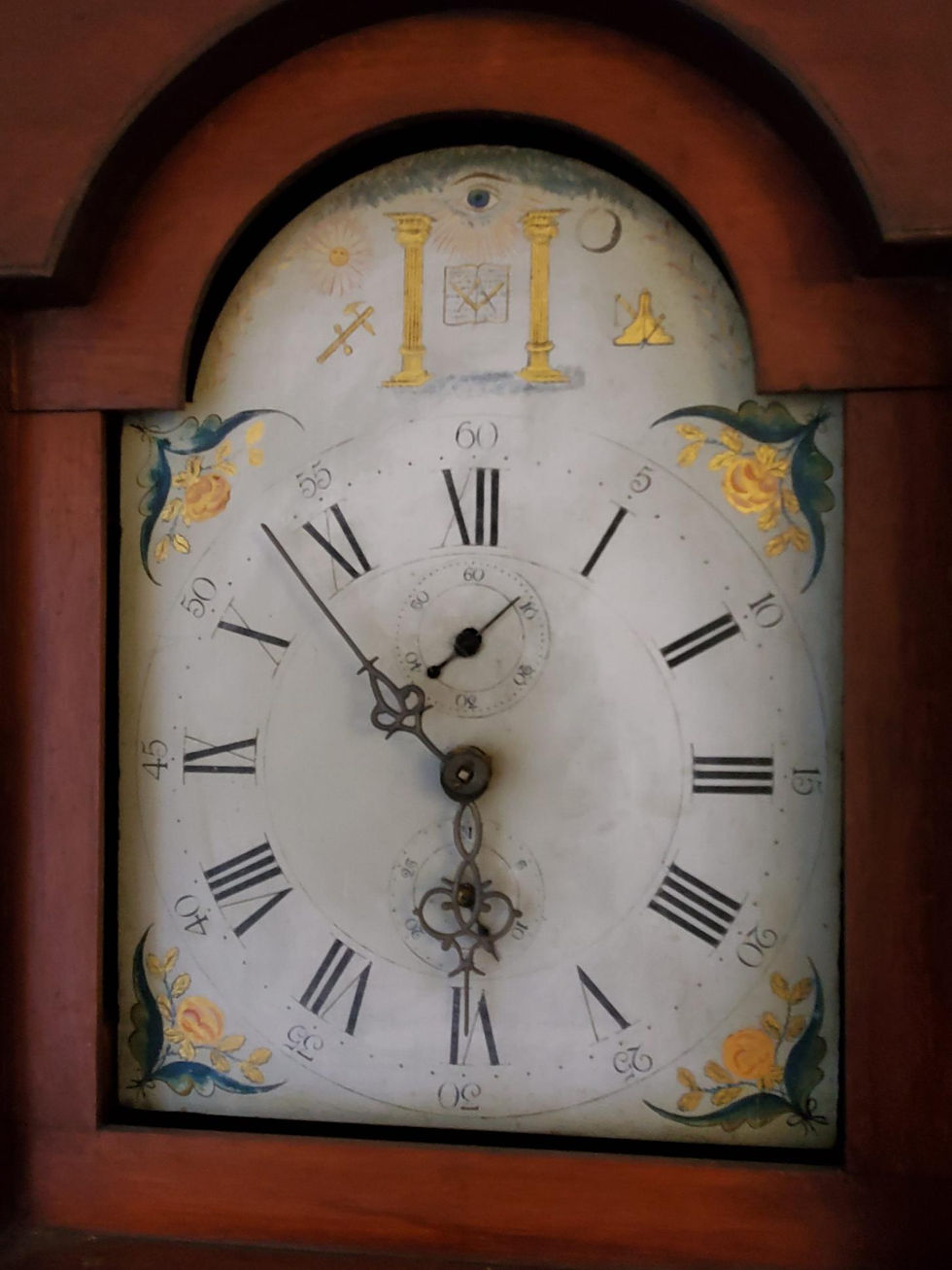When the Clock Strikes Midnight
- Melissa M. Cybulski

- Oct 27, 2022
- 2 min read
Updated: Dec 28, 2023

Storrs House Museum, Longmeadow
In a few short days we will all settle in and prepare to ring in a new year. Perhaps a clock like this will help you keep time. Today this tall clock resides at the Storrs House Museum, the home of the Longmeadow Historical Society.
Henry H. Emerson of Longmeadow donated the clock to the Historical Society in 1942, one year before his death. The Emerson siblings who lived at 476 Longmeadow Street are responsible for much of what we know about old Longmeadow. Paesiello Emerson took hundreds of black and white images of the town, houses, and people that we use to tell our stories; Annie Emerson was an early supporter of and historian for the Historical Society, and Henry donated several items from the family’s home for us to preserve.

The clock as it stood in the corner of the Emerson home c. 1920
Not much is known about the original owner of this 7½ ft tall clock with wooden works. Accession records indicate that it had resided in the “Cooley-Emerson” house since around 1820 when it was made and that perhaps its pine case was made by Longmeadow resident David White.

A few years ago local horologist, David Gallup, examined it and shared his interesting insights: "Connecticut Tall Clock, Wooden Movement, circa 1820. The movement for this clock was made in Connecticut at the beginning of the 19th century by an unknown maker when small water-powered shops were making wooden movement clocks from the forests of Connecticut using oak, cherry, and laurel. Brass movement clocks were very expensive to make and only the wealthy of New England could afford them. The case is a country case made of pine and stained. Some cases were hand grained. This clock is weight powered and runs about thirty hours. It has to be wound every day by pulling up the cords on the weights. The dial is hand-painted on wood. This country clock was affordable for the residents of small New England towns whose economy relied primarily on agriculture." Longmeadow of 1820 certainly was a community of frugal-minded farmers.
Particularly intriguing about the clock is the presence of masonic figures on the face. The original owners of the house, the Cooley family, counted several masons among its members. At least four Cooleys were members in local lodges, including Stephen Cooley, Jr who was a charter member of the local lodge in 1817. Hanan Cooley, his brother, was a mason/gravestone carver.
An antique clock such as this one has watched over the turning of approximately 200 new years. If it is true that it stood in one house for the first century and a half of its life, imagine what stories it could tell about the people and households who made sure to wind it every day to keep it running. How many ordinary days did it keep time for? How many momentous events did it stand watch over?

The Longmeadow Historical Society wishes you a healthy and happy New Year. We look forward to bringing more stories of our town to you in 2024.
Contributed by Melissa Cybulski, Board Member, Longmeadow Historical Society. Support by Al and Betsy McKee.
Originally published December 31, 2020



Comments